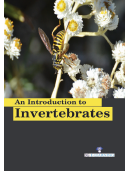Zoology

All living things are placed into groups depending on common characteristics. Invertebrates are a group of
animals that have no backbone, unlike animals such as reptiles, amphibians, sh, birds and mammals who all
have a backbone. Of the planet's estimated 15-30 million animal species, 90% or more are invertebrates. Invertebrates live just about anywhere. They have been recorded in the upper reaches of the atmosphere, in the driest of deserts and in the canopies of the wettest rainforests. They can even be found in the frozen Antarctic or on the deepest ocean oor. The trait that is common to all invertebrates is the absence of a vertebral column (backbone). The distinction is one of convenience only; it is not based on any clear biologically homologous trait, any more than the common trait of having wings functionally unites insects, bats, and birds, or than not having wings unites tortoises, snails and sponges. Being animals, invertebrates are heterotrophs, and require sustenance in the form of the consumption of other organisms. With a few exceptions, such as the Porifera, invertebrates generally have bodies composed of di erentiated tissues. There is also typically a digestive chamber with one or two openings to the exterior.